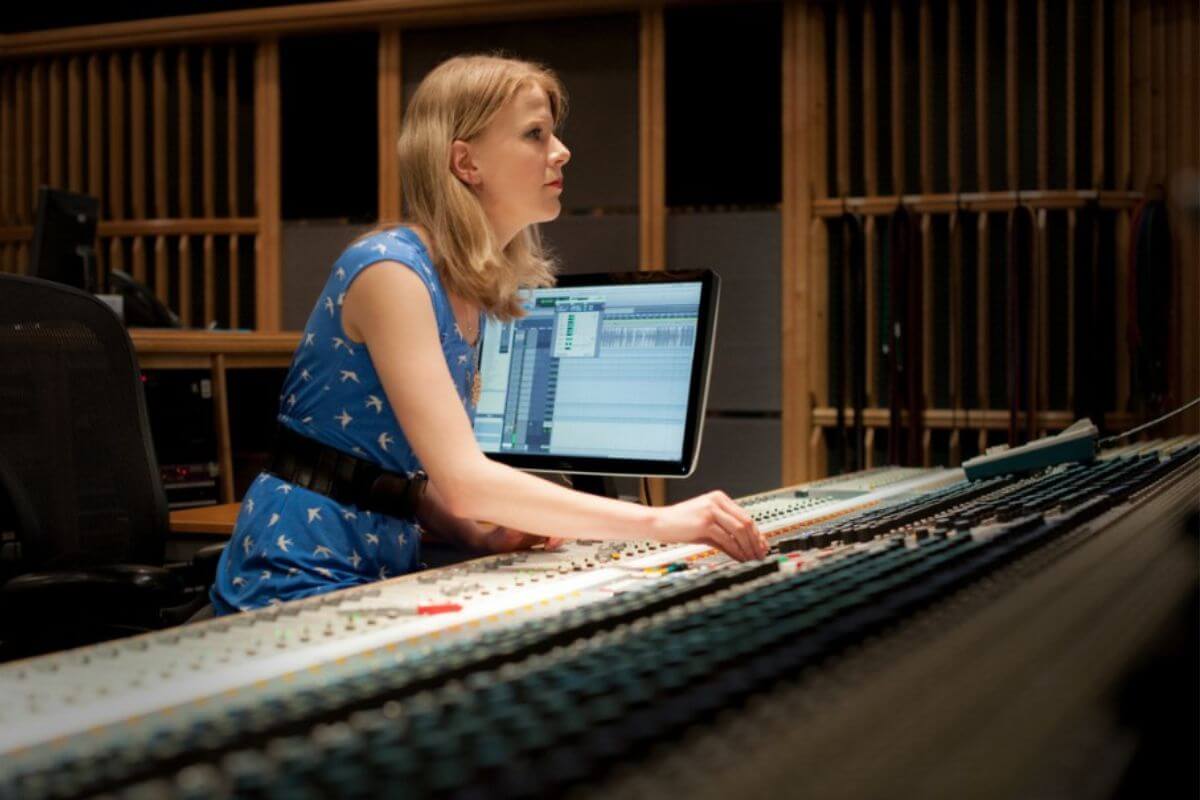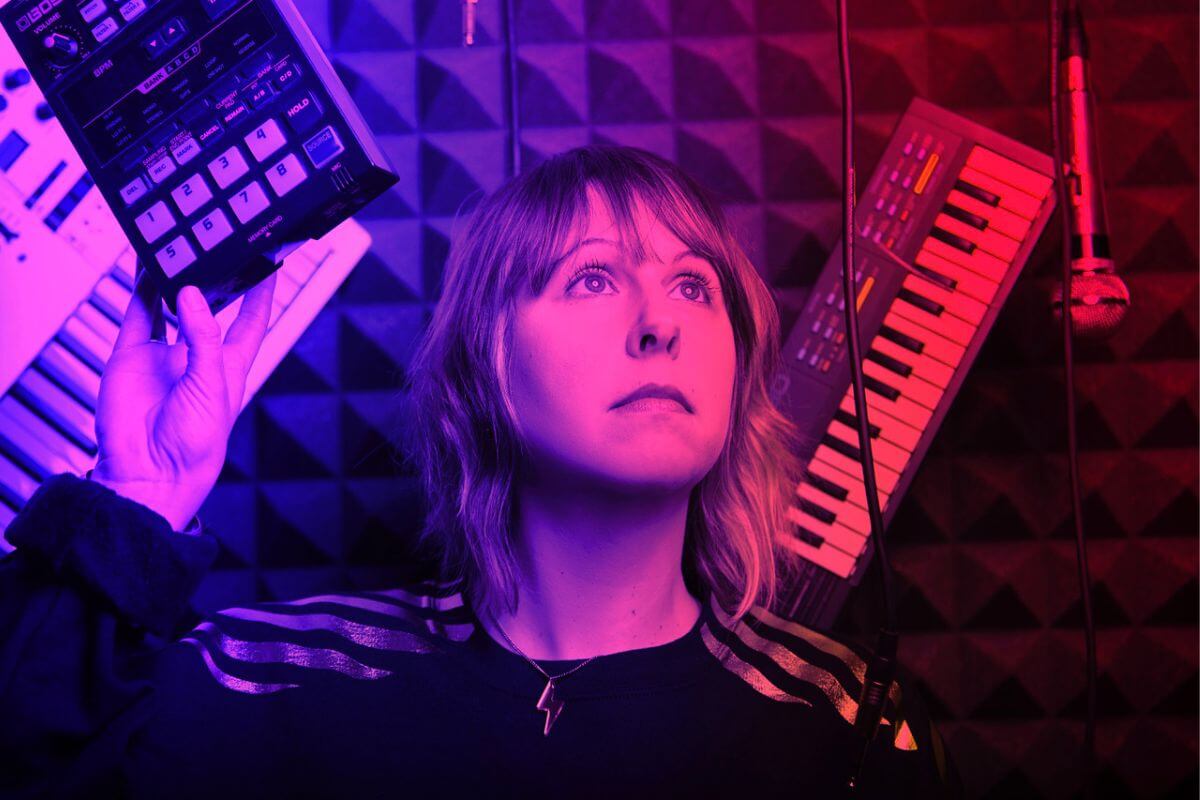When it comes to creating bold and innovative music in the recording studio, music production is key. As most musicians know, a good producer can be sonic gold dust – adding dynamism, sparkle and even completely re-imagining your entire style and sound. But whether you are working with a producer or producing the music yourself, there are some key pointers that can help musicians to realise and surpass their own expectations.
The first thing to remember is that no amount of production will help if you don’t have great material or the early stirrings of something unique. It’s also worth noting that a producer needs to like what you do and feel they can add something meaningful to it.
“It may sound obvious but if you don't feel really excited by the material and the people involved, it can end up being an uphill struggle,” says Ali Chant, a Bristol-based producer, engineer and musician who has worked with artists such as PJ Harvey, Katie J Pearson, Gruff Rhys and Mark Ronson.
Communicate your creative vision
Chant highlights the importance of finding shared reference points when working with an artist or band. “I tend to look at this like I'm establishing a language that everyone understands and can use to explain the unexplainable,” he says. “Some artists are very visual or mood orientated and some come with playlists bursting at the seams with records they love. As you get further into the project you often find that the shared language develops and becomes more instinctive.”
 Bristol-based producer, engineer and musician Ali Chant likes to set a band up to play live in the studio. ‘If it’s feeling great, then you can capture it fast’, he says.” © Jess Mills
Bristol-based producer, engineer and musician Ali Chant likes to set a band up to play live in the studio. ‘If it’s feeling great, then you can capture it fast’, he says.” © Jess Mills
Chant tries not to impose any rules in the studio and remains open to new approaches. If he is working with a well-rehearsed band the first thing he does is to set them up to play live, even if they end up overdubbing everything. That way, says Chant, he can hear how all the parts interact and get a good overview of the arrangement. “I find it helpful to be able to tweak performances in real time rather than rely on editing and post-production. If it’s feeling great, then you can capture it fast,” he says, the main aim being to create “excitement and an emotional connection”.
The positives of performing live in the studio
It’s a view shared by Olga Fitzroy, a recording and mix engineer at AIR Studios in London and an executive director at the Music Producers Guild (MPG), who has worked on records for artists such as Coldplay, The Foo Fighters and Muse, as well as on film scores for composers including Hans Zimmer and Dario Marianelli.
“There’s nothing quite like capturing an amazing live performance, even if you go back afterwards and polish or replace certain bits,” says Fitzroy. “There’s a certain magic to a bunch of musicians playing together that’s difficult to recreate.”
Fitzroy stresses the importance of deciding the precise tempo early on. “Changing the tempo of a song by just a few bpm can be really key. I often get bands to send me phone demos from the rehearsal room and I muck around with tempos and arrangements in Pro Tools and get them to try and nail those down before we even get into the recording studio.”
 The best piece of advice I was ever given is ‘trust your ears’ says Olga Fitzroy, recording and mix engineer at AIR Studios. © Blake Ezra Photography
The best piece of advice I was ever given is ‘trust your ears’ says Olga Fitzroy, recording and mix engineer at AIR Studios. © Blake Ezra Photography
Fitroy says that sometimes limiting your sonic options can yield strong creative results. She cites as an example mixing the Tom Hodge-composed music for the 2022 ITV series The Ipcress File, which is set in the 1960s. “We decided to only use gear that would have been around at the time, so it can be fun and effective to limit your technical palette like that sometimes.”
Recording vocals: capturing the best performance
Capturing a great performance is also pivotal when it comes to vocals. Fitzroy generally does A/B comparisons between mics when working with a singer for the first time to see what suits them best. Like many, she recognises the sonic benefits of a great valve mic in the studio, although notes that “Bono famously used an S58”. “I think it’s important to remember that it’s about capturing the best performance, not necessarily about the best mic or gear.”
There’s nothing quite like capturing an amazing live performance, even if you go back afterwards and polish or replace certain bits. There’s a certain magic to a bunch of musicians playing together that’s difficult to recreate - Olga Fitzroy
Ali Chant finds vocal recording techniques “infinitely fascinating”. He generally uses a Shure SM7 and/or a Telefunken U47 for vocals, with dynamic and condenser mics on the kick and snare. “The kind of vocal performances I adore the most are the ones that feel raw, intimate and vital to me. I try not to do too many takes in a row and am open to using demo or guide vocals if they give the feeling of excitement I'm after… That said, I do sometimes use Melodyne, de-essers, mouth declicker and a fair amount of compression and always ride the final vocal pass by hand before I mix down. But I'm trying to keep these processes invisible, so the listener feels as connected to the performance as possible.”
How technology and production techniques help
The staggering array of software plugins and hardware on the market offers colossal sonic potential for producers and engineers. Popular techniques in recent years have included parallel compression; sidechain compression; reverse reverb; gated snare; stuttered vocals and pitch-shifting/time-stretching vocals. Another common one is the so-called ‘Abbey Road reverb trick’, which adds high frequency presence to push sounds forward in the mix.
“I think I’ve used all of the above at least once,” says Ali Chant.
“EQ and filtering of reverb sends can be great. Sometimes you want brightness and sibilance coming through and sometimes you want your reverbs dark and in the background. Some reverbs have an inherent tonality to them as well. All colours can have their place in music production.”
Like Chant, Mika Sellens is well versed in all these production techniques. Sellens is a London-based producer, songwriter, composer and engineer whose work encompasses elements of synth-driven electro, contemporary pop, and chilled-out soul, with a heavy dose of retro drum sounds and sampled beats. Sellens is an executive director of the Music Producers Guild (MPG), a senator for the Ivors’ Academy and is passionate about working to bring lasting positive change to the UK Music Industry and supporting more women and gender minorities into music production and engineering roles.
“Reverse reverb can be a useful tool at transitions to add tension,” says Sellens, “I nearly always use some element of sidechain compression to help the mix, but I also use it on synths for specific effect too. Pitch-shifting and time-stretching vocals is another specific vocal effect. I’ll often create high and low vocal doubles layers using pitch shift and have them low in the mix. At other times, I use these techniques to create a specific vocal sample sound.”
Creating your sonic landscape
Sellens’s sessions often start from scratch, with a songwriting session. It’s all about getting a feel for the sonic landscape, she says. Sellens believes that far too much attention is given to achieving impeccable vocal pitch in the studio, adding that vocal pitch is “not absolute” and that the way that a vocalist moves between notes, or hits notes slightly sharp or flat, is part of the character of their voice. It’s important to keep this in mind and not just tune everything exactly, says Sellens.
“It’s about getting a feel for what’s important for a specific voice you are working with. It has to feel natural. Other things I think about are vocal doubles, BVs, and the balance of reverb and delay to achieve just the right presence for the vocal in the overall production. I like my vocals front and centre and high in the mix.”
 Mika Sellens advises aspiring producers to not be afraid to experiment. © Sonya Hurtado
Mika Sellens advises aspiring producers to not be afraid to experiment. © Sonya Hurtado
Like many producers, Sellens frequently comps vocals to encompass the best moments from various takes. “I like to manually clip-gain or automate volume in relation to effects too, so I can control how particular notes hit a reverb for example. I do this as well as using compression. I manually pitch-adjust most things too.”
Sellens says the ultimate aim is to create a production that best presents the song and the artist and is a great listening experience sonically. “I think that a production should have a journey, and also a particular character that makes it feel original and specific to the artist and their work. Sonically, elements should blend well, but also provide interest and character.”
I think that a production should have a journey, and also a particular character that makes it feel original and specific to the artist and their work - Mika Sellens
As always, much of the power of great recordings comes from what producers and the artists decide to leave out. Less is most definitely more and one of the simplest techniques to add light and shade is to simply drop out elements such as the bass or the kit at key points.
“Absolutely, some of the greatest productions exercise a lot of restraint and space,” says Ali Chant. “Listen to mid-era Fleetwood Mac for example. Some of the massive songs actually have very little going on. Every part counts, it's not layered to bursting point and has room to breathe.”
Advice for aspiring producers
When asked what advice they would give aspiring producers all three are adamant in their responses.
“The best piece of advice I was ever given is ‘trust your ears’ says Olga Fitzroy. “You don’t need permission to have an opinion!”
Ali Chant advises up-and-coming producers to avoid convincing themselves that there is a right way or a wrong way to do anything “There are a lot of 'assumptions' on the internet, but there is no better way to learn than to do. All humans fall into habits, and if you're making music these can become part of your 'sound'. One of the best bits of advice I was ever given was to try and do at least one thing differently on every session.”
Listen to mid-era Fleetwood Mac, for example. Some of the massive songs actually have very little going on. Every part counts, it's not layered to bursting point and has room to breathe - Ali Chant
Mika Sellens advises aspiring producers to not be afraid to experiment. Try things and see what works for you, says Sellens, and don’t feel you have to use certain techniques just because others are.
“Make sure that the techniques you do use are enhancing your work, and that you are using them for a reason, or to create a specific effect. We are all continually learning, so don’t be afraid to try things. Learn from the things that don’t work as well as those that do, and use that knowledge to improve your process in the future.”